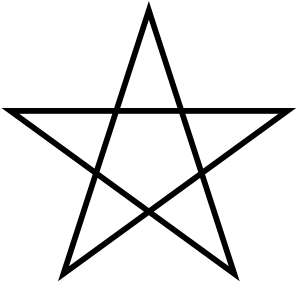Lingeer Fatim Beye facts for kids
Quick facts for kids Lingeer Fatim Beye |
|||||
|---|---|---|---|---|---|
| Lingeer of Sine | |||||
 |
|||||
| The Star of Yoonir. Symbol of the Universe in Serer religion and cosmogony. It also symbolizes the Serer people of Sine. (O xoor paÿ) |
|||||
| Reign | c. 1335 | ||||
| Heir-apparent | Lingeer Ndoung Jein, Lingeer Fatim Malado, Lingeer Ndoye Demba | ||||
| Born | Kingdom of Sine | ||||
| Spouse | Maad a Sinig Maysa Wali Jaxateh Manneh, king of Sine (Maad a Sinig, 1350 - 1370) | ||||
| Issue | Lingeer Ndoung Jein (not the only issue, and not a daughter of Maysa Wali.) | ||||
|
|||||
| House | Joos c. 1335, founder / matriarch | ||||
| Religion | Serer religion | ||||
Lingeer Fatim Beye Joos Fadiou (also known as Lingeer Fatim Beye) was an important princess and queen from the 14th century. She was a Lingeer, which is a title for a Serer queen. She came from the Kingdom of Sine, an old kingdom in what is now Senegal.
Fatim Beye is seen as the first leader, or matriarch, of the Joos Maternal Dynasty. This was a powerful family line that started in Sine and later became very important in the Kingdom of Waalo. Her family name is Beye or Bèye. Joos Fadiou is the name of her mother's family group. In the Serer language, "Fa-tim" means "the maternal clan of...".
Her granddaughter, Lingeer Ndoye Demba, married the king of Waalo around 1367. This marriage helped the Joos Maternal Dynasty become strong in Waalo. This family line ruled in Waalo from the 14th century until 1855. That's when the French took over, and the kingdom ended. The Joos family provided many kings for Waalo. However, there were also struggles for power between different maternal families in the country.
Who Was Lingeer Fatim Beye?
Lingeer Fatim Beye was a member of the Serer people. She was the first leader of the Joos Maternal Dynasty of Waalo. The Joos Maternal Dynasty was a Serer family line that became important in the Wolof Kingdom of Waalo. In the Serer language, this family is called Joos Fadiou.
Fatim Beye lived at the same time as other important leaders. One was Ndiadiane Ndiaye, who started the Jolof Empire. Another was Maad a Sinig Maysa Wali Jaxateh Manneh. He was the first Guelowar ruler in Sine. The Guelowar were a group of people who became kings in several Senegambian kingdoms.
Some stories say that Lingeer Fatim Beye married Maad a Sinig Maysa Wali. This marriage would have connected her family to a big change in the history of Sine. It helped shape how Sine was ruled from the medieval times until the 20th century. Marriages between important Serer and Guelowar families were common.
After a big battle in 1335, the Guelowars moved to Serer land. Lingeer Fatim Beye's family, who were part of the Serer nobility, gave them a safe place to live. Because she was an early leader of the Joos Maternal Dynasty and had royal ties to two kingdoms, Lingeer Fatim Beye is seen as a very important woman in the history of Senegambia. Her family members continued to play a big role in the region's history for centuries.
The Joos Maternal Dynasty's History
The Joos Maternal Dynasty started in the Serer Kingdom of Sine. It became important in the Wolof Kingdom of Waalo through Lingeer Fatim Beye's granddaughter, Lingeer Ndoye Demba. Lingeer Ndoye Demba was a Serer princess from Sine. She married the king of Waalo, Caaka Mbaar Mbooj.
This marriage, around 1367, helped establish the Joos Maternal Dynasty in Waalo. This family line is connected to old Serer royalty. Caaka Mbar was the son of Bakar Mbooj, who started the Mbooj paternal dynasty of Waalo. He was also an early holder of the royal title Brak.
Ndoye Demba's marriage to one of the first Braks helped the Joos Maternal Dynasty last for almost 600 years. This family line provided many Braks of Waalo. Brak Yerim Mbanyik was the first king from this maternal dynasty. He was the son of Lingeer Ndoye Demba and Brak Caaka Mbar. The Braks ruled Waalo from the 14th century until 1855. This was when French colonialism ended the monarchy.
Even though Lingeer Ndoye Demba is often seen as the main ancestor of the Joos of Waalo, Lingeer Fatim Beye is considered an earlier ancestor and the first leader. Some sources even say that Fatim Beye was the actual founder of the Joos Dynasty.
Here's what one source says:
That Fatim Bey [Beye] is called the founder of Dioss [Joos] does not conflict with the view that Ndoye Demba is Dioss' ancestor. Fatim/Fatimata Beye was an earlier ancestor.
See also

- In Spanish: Fatim Bèye para niños

